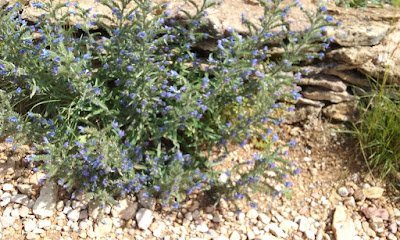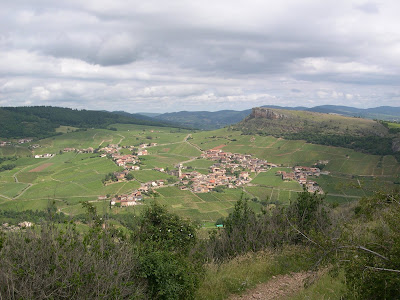‘Jazz à Vienne’ is a world-renowned jazz festival that we
had been talking about attending ever since we first stayed in Lyon in
2010. It took our landlords, Nathalie
and Stéphane, to finally get us off the mark and actually in Vienne for a show
last year.
 |
| This Year' Festival Program |
This year Stéphane said he might be able to get free
tickets, as he is a performer at one of the other venues in Vienne, but in any
case he wanted us to go with him. We put
it on our calendar for July 2, when the show was to be headlined by Bobby
McFerrin, the singer of the infectious 1980’s hit, ‘Don’t Worry, Be Happy’,
with its Caribbean beat. Mr McFerrin has
since made a career out of putting together and performing voice-ensemble live
performances, in which human voices are presented as musical instruments,
mostly without words, but sometimes as a sort of scat-singing style.
So, we met Stéphane at the Part-Dieu train station at about
5PM and embarked for Vienne, about 30 minutes south of Lyon.
 |
| The Jazz Lovers Ready for the Show |
We arrived quite early for the 8:30 show, but that meant we
could leisurely stroll to the old Roman amphitheater and claim some of the very
best seats available. We had brought the
seat cushions that Anna had assembled from cheap throw-pillows and towels last
year, because the downside of a 2000 year-old Roman amphitheater is that it is
a 2000 year-old amphitheater with 2000 year-old stone seats. Hard on the backside after 3-4 hours!
The opening act was another American group, José James and
his group, who played a number of songs by Bill Withers [Lean on Me, Ain’t No
Sunshine…], along with other soul and blues tunes. They were very talented, especially the
guitarist who reproduced some of Jimmy Hendrix’s more interesting riffs. They inspired a number of audience members to dance
in the aisles.
 |
| José James and his Group |
Bobby McFerrin then came on with a 4-member group plus a
25-30 member choral group arranged by voices in chairs in an arc behind the
other performers. The individuals making up the four people
behind Mr McFerrin each gave performances that were at times very interesting
and entertaining. The rest of
performance consisted mostly of wordless singing, including call-and-response
and a type of scat, involving the chorus and one or more of either Bobby
McFerrin or the four individuals.
 |
| Bobby McFerrin, Singers, and Chorus on Stage and Big Screen |
From our point of view, the performances seemed to be
without a theme or melody and after a while became repetitious. After an hour and a half some audience members
began to leave. Whether this was because
they did not like the performance or because they simply had to depart, we
could not say. However, this is a
phenomenon we have not previously observed at a live performance in France.
 |
| A Full House in Vienne |
That being said, music and its appreciation is a matter of
personal taste and there is no denying the high level of musical talent and
ability of Mr McFerrin and his performers.
They were doing things musically that were
very original, and required a large amount of practice to be as polished as they
were. The evening was extremely entertaining and interesting, and we
definitely appreciate Stéphane making the effort to include us.

















































